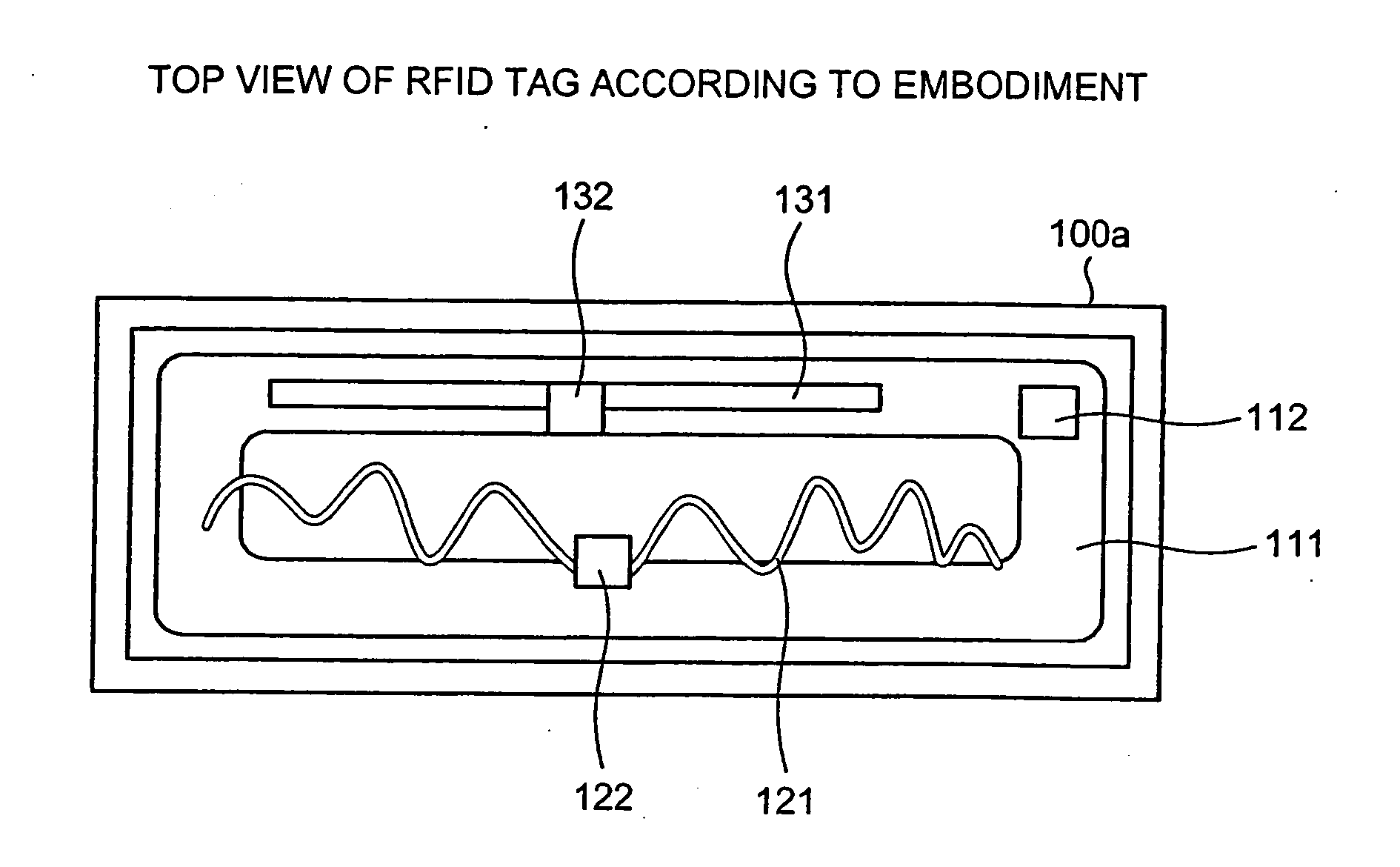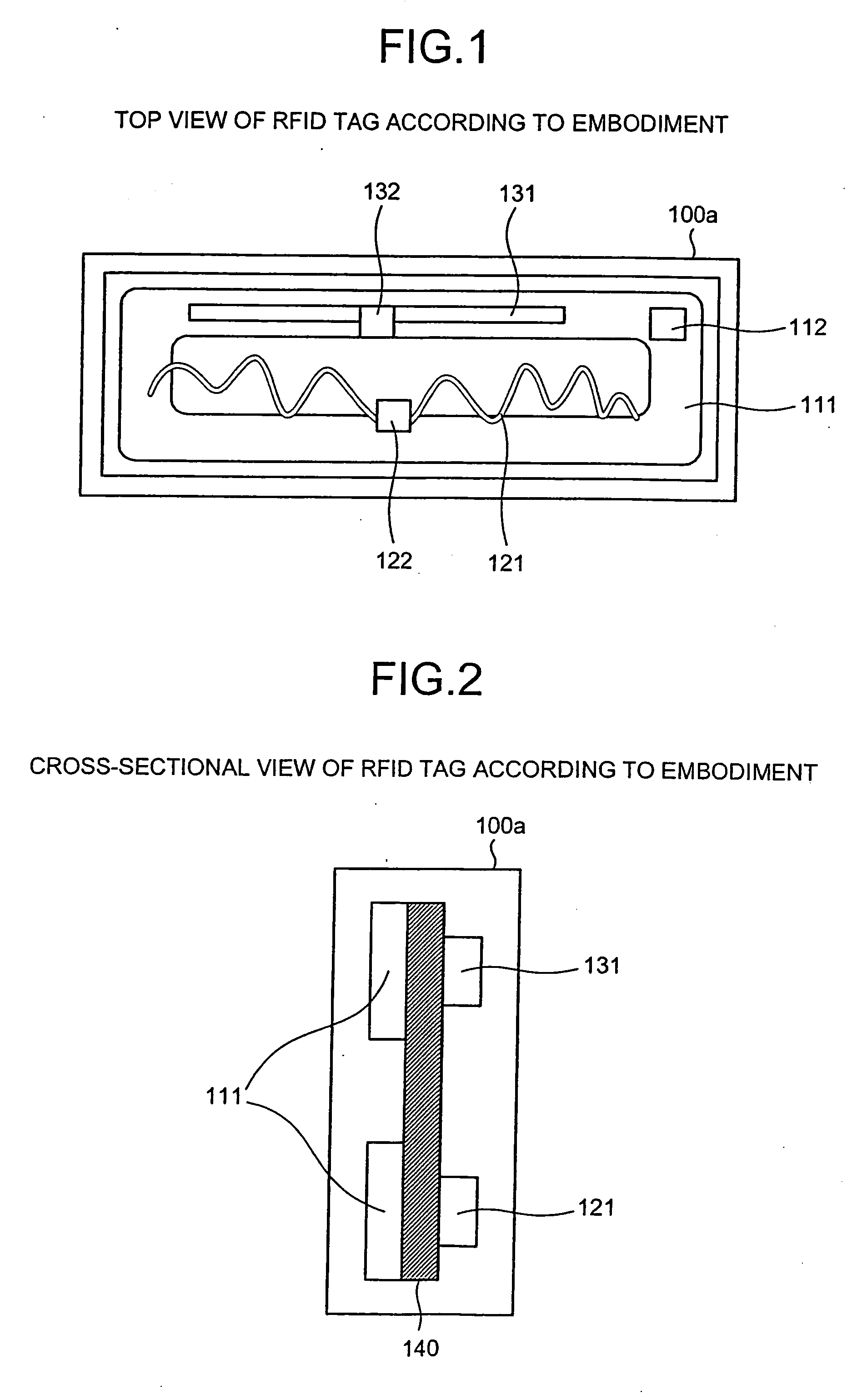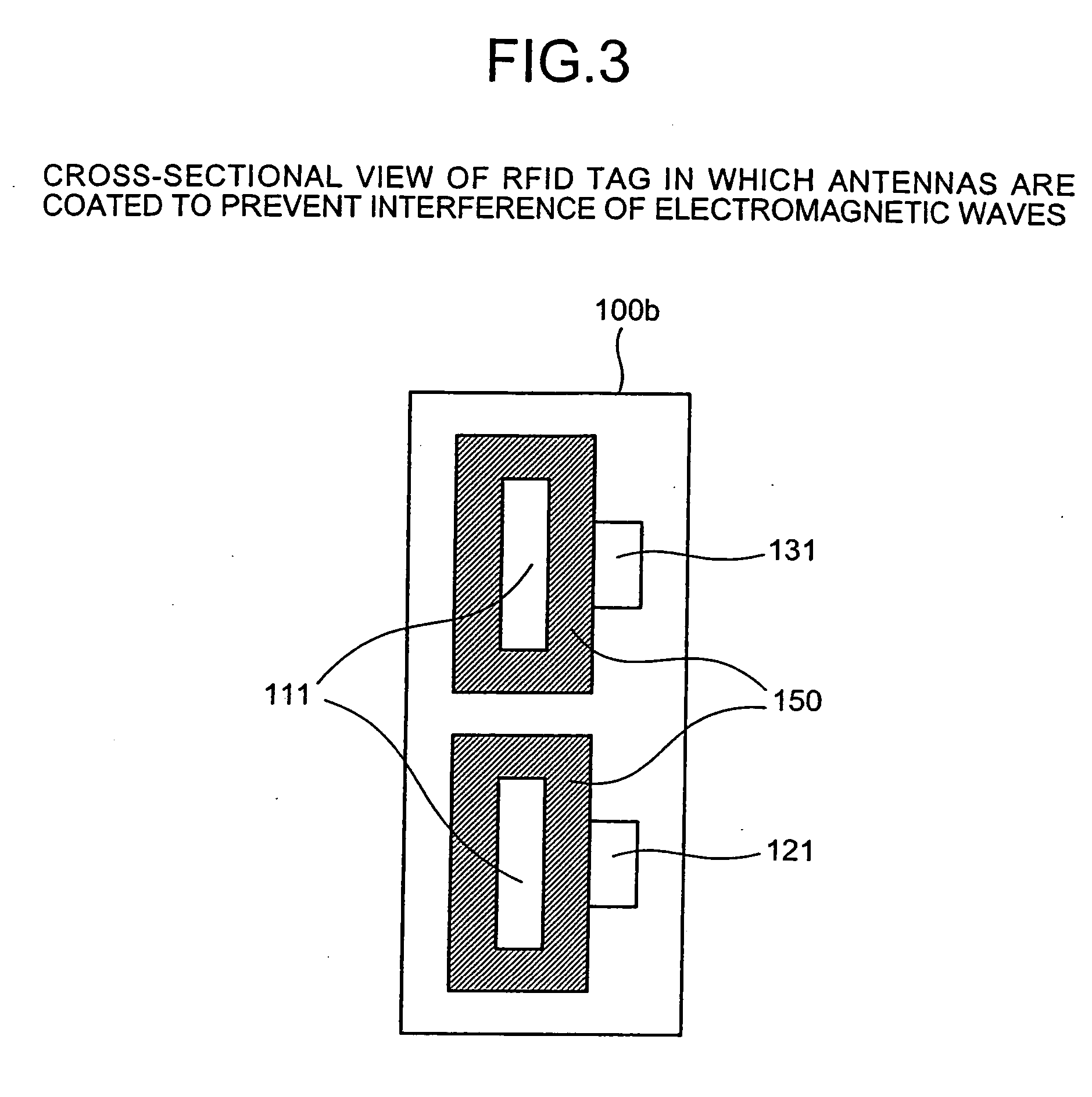RFID tag and antenna arranging method
a technology of arranging method and rfid tag, which is applied in the direction of burglar alarm mechanical actuation, burglar alarm by hand-held articles removal, etc., can solve the problems of affecting the communication range between the rfid tag and the reader/writer, affecting the communication performance, and affecting the communication range, so as to prevent the interference between the antenna and the antenna, prevent the interference between the antenna
- Summary
- Abstract
- Description
- Claims
- Application Information
AI Technical Summary
Benefits of technology
Problems solved by technology
Method used
Image
Examples
Embodiment Construction
[0028] Reference will now be made in detail to the present embodiments of the present invention, examples of which are illustrated in the accompanying drawings, wherein like reference numerals refer to the like elements throughout. The embodiments are described below to explain the present invention by referring to the figures.
[0029] According to an aspect of the present invention, interference in a non-contact integrated circuit (IC) tag, for example, in a radio frequency identification (RFID) tag, (hereinafter simply referred to as a “tag,” between antennas is prevented by one or more insulator spacer(s) and / or insulator coating(s). Therefore, a plurality of antennas, each accepting different frequencies, can be freely arranged in a tag, so that the antennas can occupy a minimum area. Thus, for example, an RFID tag that accepts a plurality of frequency bands and provides sufficient performance in a compact size can be provided. The embodiments described herein use a passive RFID ...
PUM
 Login to View More
Login to View More Abstract
Description
Claims
Application Information
 Login to View More
Login to View More - R&D
- Intellectual Property
- Life Sciences
- Materials
- Tech Scout
- Unparalleled Data Quality
- Higher Quality Content
- 60% Fewer Hallucinations
Browse by: Latest US Patents, China's latest patents, Technical Efficacy Thesaurus, Application Domain, Technology Topic, Popular Technical Reports.
© 2025 PatSnap. All rights reserved.Legal|Privacy policy|Modern Slavery Act Transparency Statement|Sitemap|About US| Contact US: help@patsnap.com



